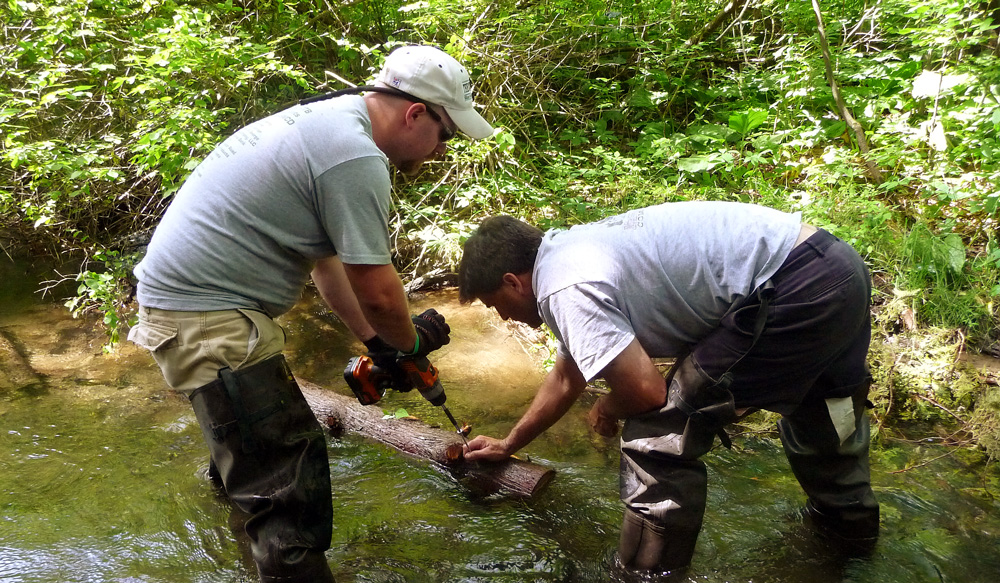Program Partners

The Lake Champlain Basin Program works with a diverse and dedicated group of partners – including federal, state, and provincial agencies, watershed and conservation groups, heritage and recreation organizations, and local citizens – to prevent pollution and protect, restore, enhance, and enjoy the water quality of the Lake Champlain Basin. The Lake Champlain Steering Committee, which sets resource management policy and approves budget allocations for the LCBP, relies on the efforts of all partners. Representatives from many partner organizations serve on LCBP’s advisory committees.
Local and Regional Government
Many of the solutions to problems affecting the Basin, such as nonpoint source pollution from urban and agricultural land uses, failing septic systems, and planning for future development, are best implemented at the local level. Local governments have primary authority over planning and zoning (in all cases except agriculture and silviculture in Vermont) and some public health issues, and can also incorporate a watershed planning focus into local comprehensive plans. However, watersheds cross town boundaries, and one town acting alone may not be sufficient to address all issues. Regional organizations – such as the county planning offices in New York and the regional planning commissions in Vermont – work with a number of jurisdictions to coordinate efforts that address issues of mutual concern.
State and Provincial Partners
State and provincial agencies in New York, Québec, and Vermont have several key roles in protecting the Basin’s resources. They administer a number of critically important resource management programs, including water-quality protection programs, wetlands protection programs, fish and wildlife management programs, and recreation and cultural resource programs, among others. The states and province also provide technical and financial assistance. The New York State Department of Environmental Conservation (NYSDEC), the Québec Ministère du Développement durable, de l’Environnement et de la Lutte contre les changements climatiques (Ministry of Sustainable Development, Environment and the Fight against Climate Change – QCMDDELCC), and the Vermont Agency of Natural Resources (VTANR) have major roles in implementation. Visit our Links page for a complete list of State and Provincial partners.
U.S. Federal Agencies
While many of the activities necessary to implement the management plan need to occur at the local and state levels, environmental restoration in the Lake Champlain Basin requires support from a variety of federal agencies. US federal agencies have taken a vital role in providing support for plan implementation. Several federal agencies have signed a Memorandum of Understanding to facilitate their cooperation and coordination through the LCBP. In October 2001, the LCBP Federal Agencies Work Group was established to coordinate among the federal agencies funding or conducting work in the Basin.
Learn more about the Federal Partners Workgroup
Research and Technical Partners
A clear understanding of the natural systems of Lake Champlain and the Basin is critical to implementing the Opportunities for Action management plan. Academic institutions, research organizations, and cooperative programs conduct vital research that provides a better understanding of lakewide problems and emerging issues. These organizations also help to educate students, teachers, and other citizens about Lake issues.
Several academic institutions within the Basin have established the Lake Champlain Research Consortium, which collaborates with the LCBP periodically to sponsor research symposia and conferences, and identifies research needs and priorities related to the management issues in the plan. Visit our Links page to learn more about other Research and Technical Partners.
Watershed Organizations
More than 40 regional and local watershed organizations are active in the Lake Champlain Basin. Activities include monitoring water quality; inventorying natural resources; watershed planning; cleaning up rivers, streams, and lakes; restoring fish habitat; and working with landowners to improve water quality. These organizations, many of which rely on volunteer and member support, are often the most familiar with conditions on the ground, and their continued communication with the LCBP about emerging issues and priorities is essential. Visit our interactive map to find out what groups are working in your watershed, or use this alphabetical list. Not sure which watershed you live in? Take a look at the map to find out.